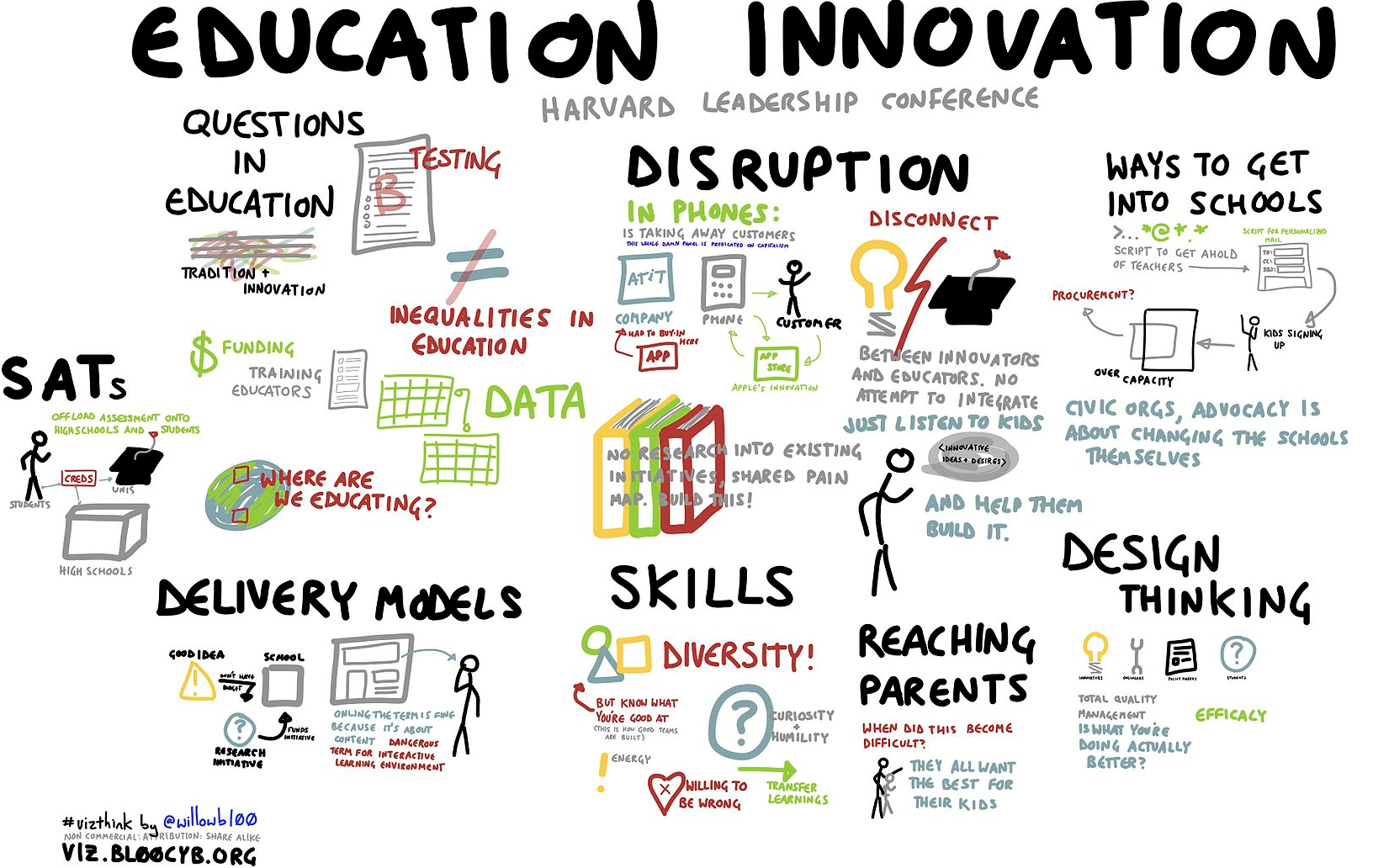
Morriss-Olson, M. (2020) 5 Destructive Myths about Innovation Gray Associates, August 4
There is an awful lot of nonsense talked about innovation and how to make it happen (particularly but not exclusively by governments), so I was very pleased to see this post written by Dr. Morriss-Olson (thanks to Academic Impressions for directing me to this).
I have also written about innovation in the use of technology for teaching in my book, Managing Technology in Higher Education (written with Albert Sangrà), so I thought it might be useful to combine Dr. Morriss-Olson’s myths with some barriers that prevent innovation, and with some strategies for innovation, that Albert and I identified when we looked at institutional approaches to innovation at eleven different higher education institutions.
Dr. Morriss-Olson’s five myths of innovation
Once again, please read the original blog post, which is not too long, but in summary she identifies the following five myths:
Myth No. 1. Innovation is too difficult
Myth No. 2. Innovation ‘just happens’
Myth No. 3. Innovation happens in a vacuum
Myth No. 4. Innovation is something only creative geniuses do
People who are presumed to be “genius” innovators most often earned their success through mundane problem-solving methods: hard work and trial and error. What this means is that any one of us and every one of us has the potential to innovate.’
Myth No. 5. Innovation is always good.
She concludes:
Five barriers to innovation
Again, it would be wise to read the whole book, but in ‘Managing Technology in Higher Education’, Bates and Sangra (2011) identified five key barriers to innovation in their eleven institutional case studies:
Barrier No. 1: Lack of effective leadership
‘There are dangers in charismatic leadership. When the leader leaves the institution, the vision and drive toward [change] also leaves at the same time…Support and acceptance from a wide range of stakeholders is necessary for success, and this means putting in place a whole raft of activities that will facilitate [innovation]…such as strategic goals and priorities.’ Without diffused leadership, innovations will remain isolated and eventually will die.
Barrier No. 2: Organizational structure and culture
‘A clear and coherent governance structure for [digital learning and technologies] is required for every institution. One major limitation is the industrial-style organizational structure of universities and colleges, and in particular the silos of academic, administrative and technological support units.’ Without a supportive, networked, organizational structure, innovations will remain isolated and unsupported.
Schein (2005) defines organizational culture as ‘a pattern of shared basic assumptions that …has worked well enough to be considered valid and is passed to new members as the correct way to perceive, think and feel in relation to these problems.’ Innovation though can often challenge such basic assumptions – indeed, changing such assumptions may be a direct goal of innovation – but often innovation, especially in teaching, can run afoul of a deeply embedded organizational culture.
Barrier No. 3: Lack of systemic training in teaching
I have written about this many times before. ‘The use of technology [for teaching] needs to be combined with an understanding of how students learn, how skills and competencies are developed, how knowledge is represented through different media, and how learners use different senses for learning.‘ Without such basic understanding, innovation in teaching will not be valid or successful – or at least very difficult.
Barrier No. 4: Managerial incompetence
‘We found in the case studies that program directors, heads of departments, deans, vice-presidents and vice rectors were often struggling with decision-making regarding [the use of] technology [for teaching and learning].‘ They were often in a position of making decisions without the basic knowledge and understanding of either technology or of basic pedagogy. Without such understanding, it is difficult for such managers to foster or assess potential innovations in teaching.
Barrier No. 5: Lack of resources
Priority in the allocation of resources understandably goes to supporting the traditional teaching system. This means that innovative teaching is either an addition to the regular work of an instructor, or is done ‘on the side’. However, instructors need time to experiment, innovative teaching often needs to be supported by other specialists, such as instructional designers or media producers, and the innovation needs to be properly evaluated in comparison with traditional methods of teaching.
However, often the relative costs of fully online, blended and face-to-face teaching are not well known or understood (see Chapter 7 of Bates and Sangra), but without such an understanding, effective evaluation of an innovation is impossible. Adequate resources need to be available to support innovation in teaching, if this is a key objective.
Five strategies to support innovative, digital teaching
Again, I am drawing on Bates and Sangra here:
Strategy No. 1: Think holistically
For innovations to succeed, they need to take account of the full complexity of an organisation. Bates and Sangra write: ‘At a senior management level, it is essential to think holistically about the management of technology. Senior managers need to have the whole picture about where decisions are made about the use of technology for teaching.’ Without ‘the big picture’ it will be difficult if not impossible to support and expand innovative teaching beyond the individual or instructor.
Strategy No. 2: A need for multiple visions of teaching and learning
‘We need to move away from the dominant paradigm of the fixed time and place classroom as the default model for university and college teaching, and think of all the many other ways we could organise and manage teaching. In particular, we need to think very concretely about what teaching and learning should look like in the future. Our reach should exceed our grasp, driven by our assessment of the needs of students in the twenty-first century, and not by the existing institutional requirements that they must fit into. The best place to develop such a vision is at the program level.’
Strategy No. 3: Strategic goals for teaching and learning
By definition, the results of innovation are often unpredictable. As Morriss-Olson states, innovation is not always good. This raises the question then of what we are wanting to achieve in our teaching and learning. Without such a framework or set of criteria it will be difficult to decide whether or not to support or adopt an innovation. At the same time, as a result of innovation, it may be necessary to re-think or re-examine our academic goals. Bates and Sangra list a whole range of possible academic goals that could be supported by learning technologies, but these need to be defined particularly at the program level, within an overall academic plan. This leads to the fourth strategy.
Strategy No. 4: An annual academic planning process that includes innovation in teaching
Bates and Sangra: ‘we suggest an annual rolling three- or five-year planning process for the academic plan which integrates learning technology and academic planning… modified each year in the light of new developments.’
This is where discussion of the balance between online and face-to-face learning, new teaching methods, such as blended or HyFlex learning, the result of the previous year’s innovations, and use and choice of technologies would take place, again, primarily at the program level. Such planning would also focus on supporting and prioritising innovative teaching in the coming year.
Strategy No. 5: Funding to support innovative teaching
Programs should be encouraged to innovate in their teaching, to look at better ways to deliver and evaluate programs. This could be built into the Provost’s budget, where additional funds are available for programs seeking new and more effective ways to teach, as well as funding for individual instructors who wish to try something new in departments or programs that otherwise are not being innovative (you have to start somewhere). Such funding should include money or at least require a plan for the evaluation and diffusion of the innovation.
Conclusions
This is a longer post that I would have liked, but it is an important and complex topic.
Revolution or reform?
I have come to the realisation that I don’t want to tear up the whole higher education system and rebuild it from scratch. There are many good things I don’t want to lose, such as academic freedom, the creation of new, and curation of old, knowledge, the development of the individual as well as the skills and knowledge needed in a digital world, and the independence of ‘knowledge institutions’ from commercial or government pressure or influence.
Change the program, not just the instructor
However, the system needs to change – and in a hurry. We need innovation in how we deliver and teach, in how we support learners, and how we prepare our instructors, and above all in how we use technology for teaching. As important and valuable as is the individual instructor trying something new in the classroom, we need to be more ambitious and look at innovation at the program and institutional level. Pockets of innovation are all well and good, but it is the whole institution that needs to change.
For this to happen, we need to take a more holistic approach, reward innovation in teaching, build it into program planning and properly resource it. Our institutions may be well-meaning and at a strategic level may well support the idea of innovation, but we need to be much more professional and hard-nosed about innovation, if our institutions are to survive into the second half of the 21st century.









 Dr. Tony Bates is the author of eleven books in the field of online learning and distance education. He has provided consulting services specializing in training in the planning and management of online learning and distance education, working with over 40 organizations in 25 countries. Tony is a Research Associate with Contact North | Contact Nord, Ontario’s Distance Education & Training Network.
Dr. Tony Bates is the author of eleven books in the field of online learning and distance education. He has provided consulting services specializing in training in the planning and management of online learning and distance education, working with over 40 organizations in 25 countries. Tony is a Research Associate with Contact North | Contact Nord, Ontario’s Distance Education & Training Network.

